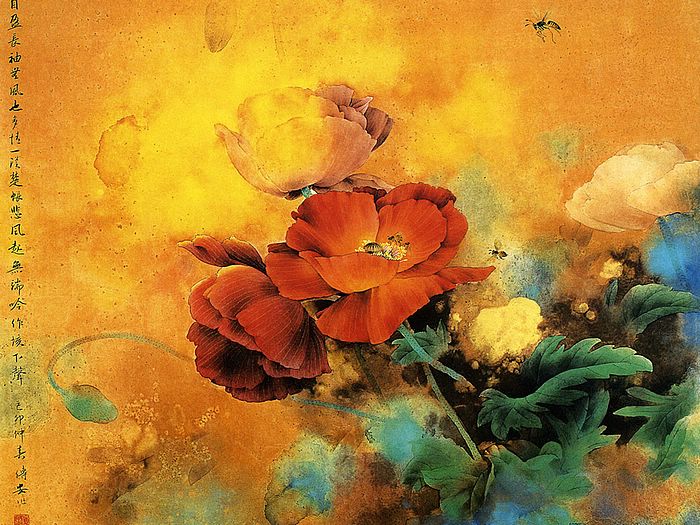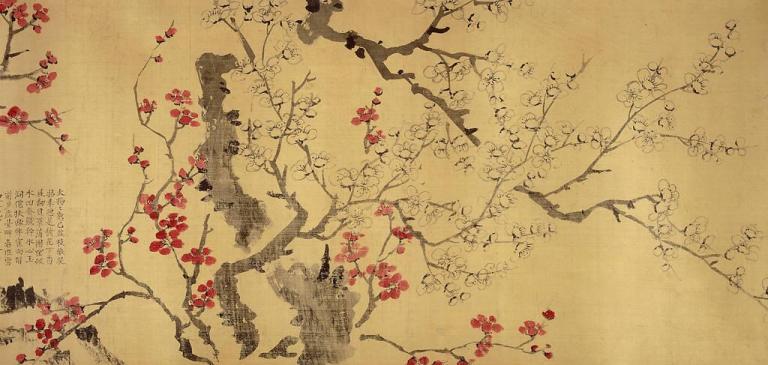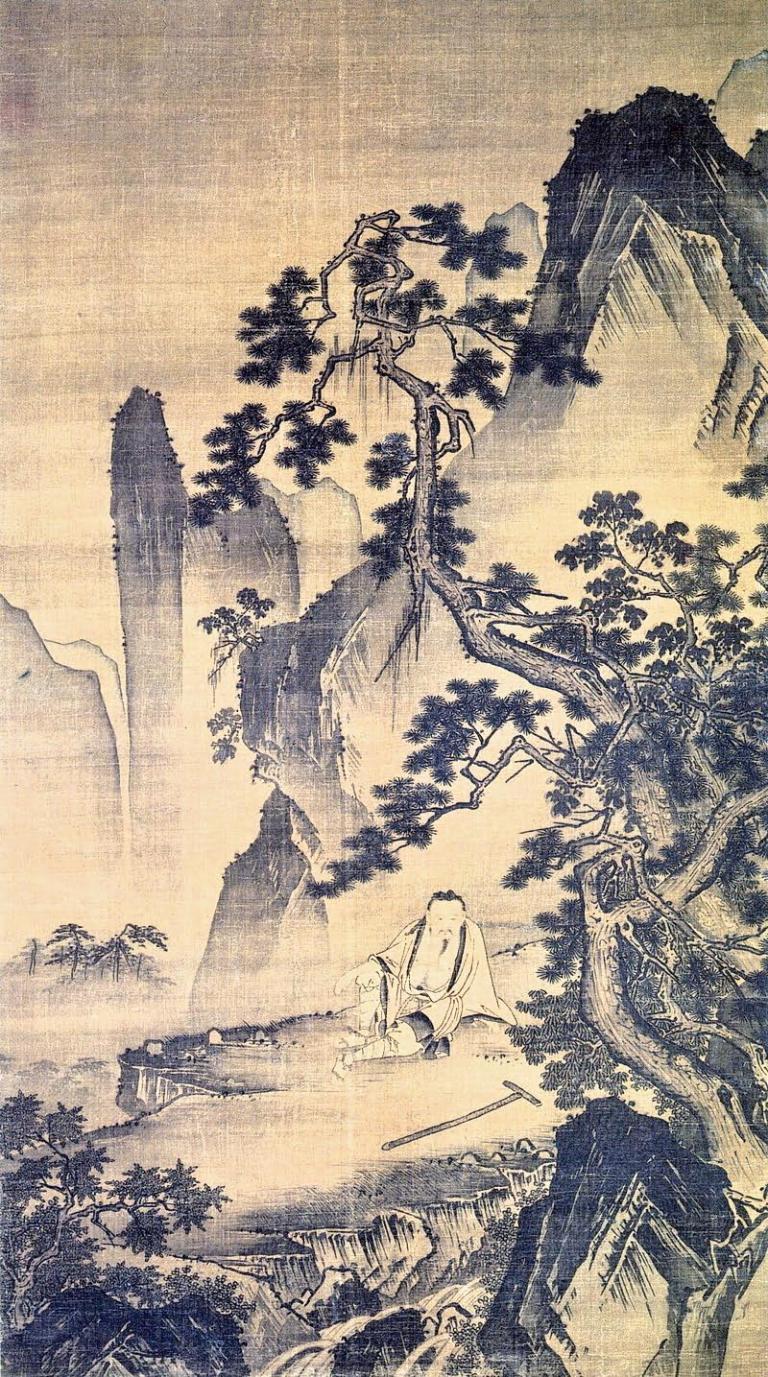Flower and bird Painting in Ming Dynasty
5 min readFlower-and-bird paintings in Ming dynasty were more diversified and had moreachievements than landscape paintings. At the beginning of Ming dynasty, court paintings were very popular. Painters’ natural painting style revealed the rulers’ aesthetic taste. Bian Jingshao and Li Ji liked to paint in a refined way and usethick and bright color. Their painting style was beautiful and elegant, which was well appreciated. Meanwhile, Lin Liangcheng followed the water ink painting style in Song and Yuan dynasties. He used water ink to paint flower and bird in a freestyle way, which cast great influence on later painters.

Sun Long, who was influenced by the skeletonless painting method initiated by Xu Congsi in Northern Song dynasty, used colors directly to paint natural flower and bird with his creativity. Xia Chang, as an official, was famous for his water ink bamboo painting. Shen Zhou, Wen Zhengming and Tang Yin were famous for theirlandscape painting, but they also made high achievements in flower-and-bird painting. Shen Zhou used heavy strokes and painted in free style. Wen Zhengming painted in a refined and elegant style. Tang Yin painted in a clear and unconstrained way. Chen Chun, Lu Zhi and Zhou Zhimian were also well known for their flower-and-bird painting. Chen Chun painted freestyle water ink painting; Lu Zhi painted in a refined and elegant way; Zhou Zhimian could skillfully paint flower and leave and vividly demonstrate the image and soul of flower and bird, which enrichedways of manifestation in flower-and-bird painting. In late Ming dynasty, Xu Wei used wild cursive hand like strokes and unconstrained use of water ink. He had direct influence on later great freestyle flower-and bird painting.

Painters of flower-and-bird paintings in Ming dynasty include the following painters:
Bian Jingzhao, with Wenjin as his courtesy name, was from Shaxian County in Fujian, or from Longxi in Gansu. He was summoned to the court for good painting skills and was appointed Expectant Official in Wuying Hall. During the years of Xuande, he served on duty in Jinshen Hall. Later he lost all titles because of bribery. He excelled in painting flower and feather. He was cultivated and good at poetry and essay writing. Having inherited the court flower-and-bird painting style.
The flower and bird he painted were well arranged and beautiful, refined and elegant. He had Bamboo and Cranes left till today.
Li Ji(1477-?, with courtesy name Tingzhen and title Leyu, was from Jin (Ningbo in Zhejiang today). He was also summoned to be court painter and was given the position of Commander of Imperial Bodyguard and served on duty in Renzhi Hall.
He excelled in flower-and-bird painting in both refined painting and water inkfreestyle painting. His refined painting style followed that of Bian Jingzhao’s style, which depicted delicately and used clean and beautiful colors. In his water ink freestyle paintings, he used simple and unconstrained water ink to manifest the flowers and birds in their most natural way. The whole painting was full of diversification and mighty power. His representative works are Laurel Chrysanthemum and Birds and Pomegranate Flower and Beautiful Cock.
Lin Liang, with Yishan as his courtesy name was born in Nanhai(Guangdong today). He was recommended to the court for his talent in painting and became quitewe11 known at his time. He was good at using water ink freestyle painting to depict images of natural flower and birds. The painting style was vigorous and unconstrained, simple and free, rapid yet with strength. The eagle, wild goose, aigrette, peacock and pheasant, etc. as well as flower and grass, green pines, ancient trees and mountain rocks in his painting all provided the viewer with a clear sense of wild field and demonstrated the vitality of nature. Hisrepresentative works include Birds Gathered in Shrubs and Two Eagles. Chen Chun(1483-1544), whose courtesy name was Daofu, was titled Baiyang Hermif. He was born in an official family in Changzhou (Suzhou in Jiangsu today).
He was fond of calligraphy and painting since he was very young. Later he became a student of the Imperial College and demonstrated his talents in poetry, prose writing, calligraphy and painting. In painting, he learned from Wen Zhengming and excelled in landscape painting and flower-and-bird painting. His landscape painting style followed Mi Fu in Northern Song dynasty and Gao Kegong in Yuan dynasty yet with diversification. He could manifest the change of South of the Yangtze Riverregion landscapes in different weathers like cloudy, sunny, rainy and foggy days.
The representative work was Net for Catching Birds. Chen Chun was especially good at water ink freestyle painting of flowers. He usually painted ordinary flowers in gardens. In his painting one could see calligraphic characteristic. He liked to use strokes and water ink in a simple and definite way and bestowed his picture with literati’s taste and interest. He was quite influential in his time as well as the following times. His representative works also include Rocks from the Lake and Camellias and Daffodils, etc.
Xu Wei(1521-1593), whose courtesy name was Wenqing or Wenchang, had various pen names such as the Hermit of the Heavenly Pond, Taoist Priest of the Green Vine House, etc. He was born in a poor family in Shanyin (Shaoxing in Zhejiang today).
His life was full of difficulties and frustrations, yet he was versatile and highly cultivated in literature. He was a famous opera playwright in Ming dynasty withworks List of Southern Lyrics and Four Tones Singing of Apes, etc. He was also a great calligrapher who was especially good at cursive hand calligraphy. Xu Wei could paint landscapes, human figures, animals, insects and fish, especially flowers. He combined skills of splashed water ink and broken water ink together and used brush pen in a rapid and unrestrained way. The painting style was imposing and ma jestic with unique personal features. He developed the demonstration skills of great freestyle water ink painting and influenced later freestyle painters. His representative painting works were Water-ink Grapes, Pomegranate Fruit, Peony and Rocks and Sundry Flowers, etc.









